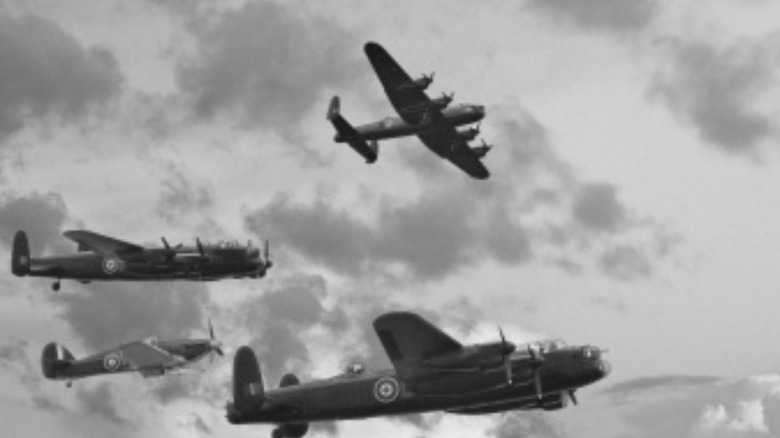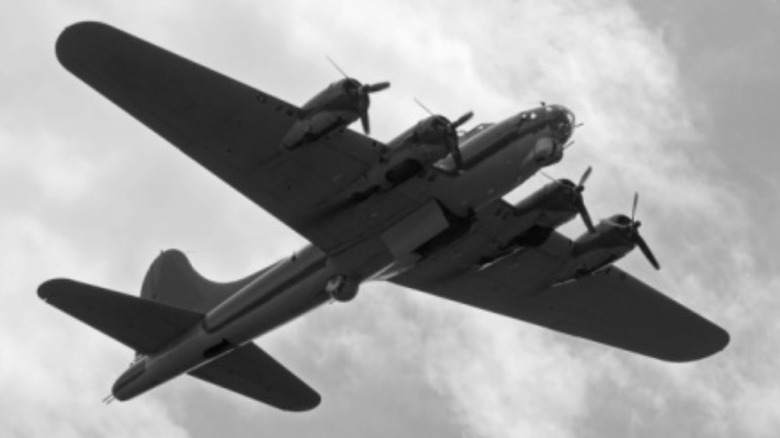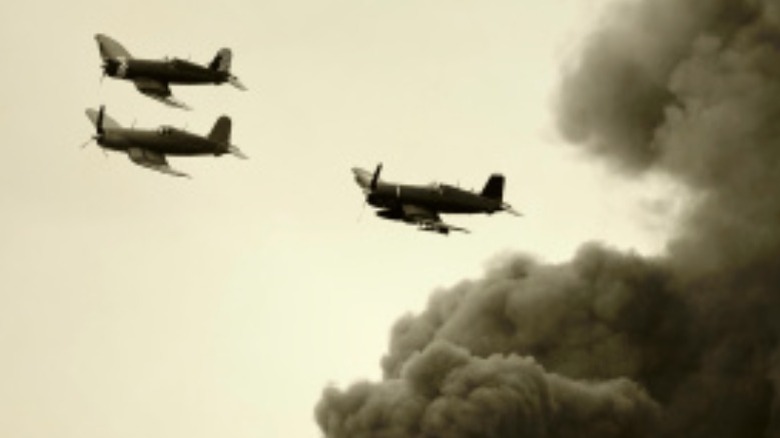Why The US' Operation Tidal Wave Proved To Be An Early Failure In WWII
On paper, the U.S. WWII mission "Operation Tidal Wave" seemed like a wise strategic move. But due to some miscalculations and pilot errors, what could have been a serious blow to Axis fuel supply lines turned into a catastrophe.
In early 1943, Allied forces met at the Casablanca Conference and concluded that a strategic bombing raid of Nazi oil in Romania would hinder the enemy's war effort (per Air Force Historical Support Division). Military brass calculated that the oil refineries in Ploiești, Romania produced about a third of the petroleum the Nazis consumed and that eliminating this supply would slow their war machine to a crawl.
Colonel Jacob Smart took the lead on planning an air attack on these facilities. But rather than have squadrons of planes flying high over the targets and in the range of enemy radar, Smart had a different strategy in mind for Operation Tidal Wave: Groups of bombers would fly low to evade radar. These units would leave Africa, fly across the Mediterranean, and make their way to nine targets inside Romania.
As the bombers entered Romanian airspace, the plan quickly fell apart. By the time the attack concluded, the Allied command would take heavy casualties and limp away from a mission that might have been ill-conceived from the start.
Operation Tidal Wave ended on a bad note
Operation Tidal Wave took its first hit moments after it launched. According to History, two of the bombers crashed not long after they took off from the Allied base in Libya. One was severely overburdened and went down right away, while the second flew into the sea. By the time the groups entered Romanian airspace, 10 of the 177 bombers that began the raid had been lost or forced to land elsewhere.
The idea to avoid Nazi radar by flying low might have worked if the pilots hadn't broken the mandated radio silence. Unfortunately, one group of bombers went off course, and they needed the radios to get back on the right path, alerting the enemy. To make matters worse, this wayward group found themselves flying towards their objectives from the south, putting them in the path of the heaviest assemblage of Nazi anti-aircraft weapons.
Nazi fighters appeared in the sky, picking off the bombers one by one. The first wave successfully hit their targets, but those that followed had trouble navigating the area due to all of the resulting smoke. Allied bombers crashed, many of them shot down by Nazi fighters.
The Allied casualties from Operation Tidal Wave were massive
After the U.S.' Operation Tidal Wave, only 88 of the bombers returned to the base in Libya (via History). The disastrous mission took the lives of more than 300 Allied airmen, while another 108 were captured by enemy forces. Though the low-altitude bombing raid did hamper Ploiești's oil production, the Nazis fixed up the refineries and the area recovered from the attack within less than a year. The region the Allies referred to as "Hitler's Gas Station" remained operational and in Nazi hands until Soviet forces seized it in 1944.
Five WWII airmen received the Congressional Medal of Honor for this mission. Colonel John Kane and Colonel Leon Johnson were both awarded the accolade for successfully leading their respective groups of bombers to their intended targets. The other three honorees got their medals posthumously. Lieutenant Colonel Addison Baker and Major John Jerstad received the honor for attempting to fly their damaged bomber high enough so that their crew could parachute out of it, though the gambit ultimately failed. Lieutenant Lloyd Herbert Hughes got his medal for a selfless act: Rather than trying to bail out of his damaged aircraft, Hughes flew the bomber into its intended target.


